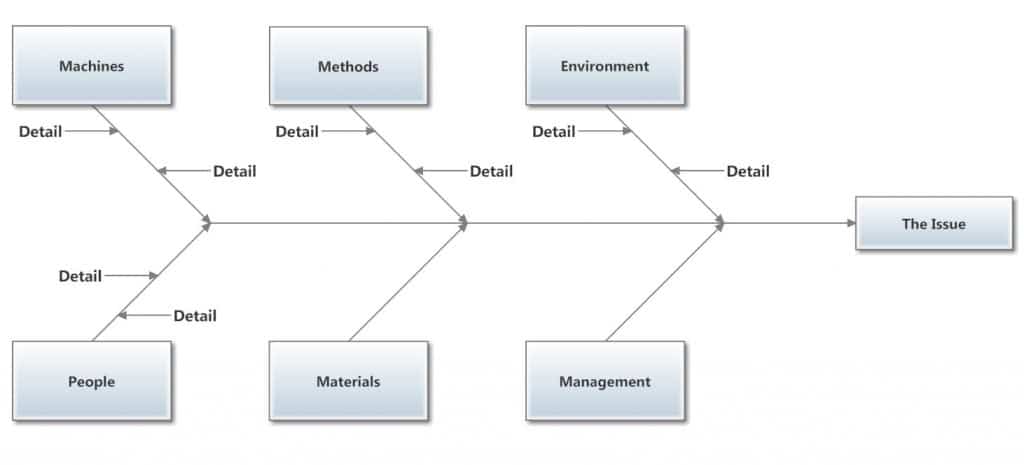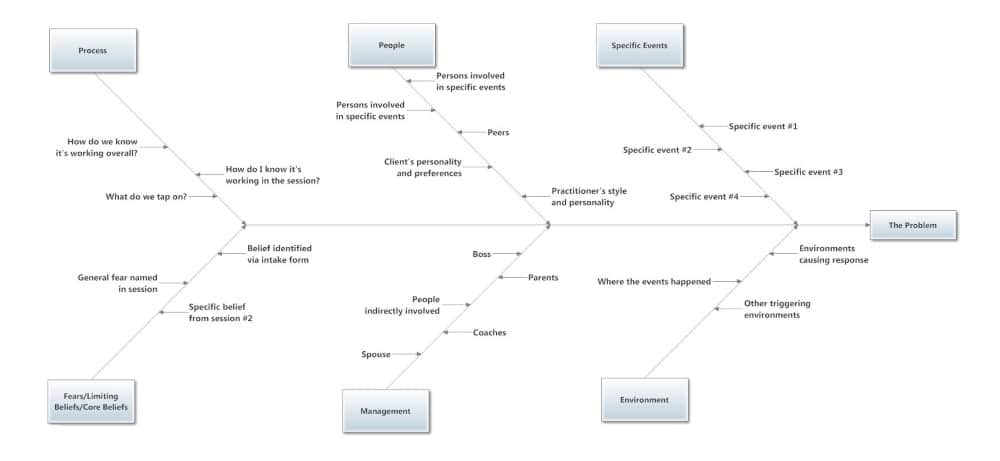What’s a fishbone and how can I use it?
I used to do process improvement work and one of the tools for expanding thinking is the fishbone diagram, aka the cause-and-effect diagram, aka the Ishikawa Diagram. The tool is a template for brainstorming possible causes of an effect.
The tool can be used in two ways:
1. Brainstorm all possible causes and categorize them and then look for gaps in the categories.
2. Use preset categories and fill in the information.
 In a process improvement setting, a fishbone has the generic categories of:
In a process improvement setting, a fishbone has the generic categories of:
- People
- Methods
- Machines
- Materials
- Measurements
- Environment
I recently used the fishbone to look at a client case study where I needed to expand my thinking and get new ideas for approaching tapping. In this case I modified the Fishbone to have the categories:
- People
- Environment
- Management
- The Process of EFT
- Specific Events
- Fears/Beliefs/Thoughts
People
- All the people involved in the specific events.
- Client characteristics and personality traits affecting both the EFT process and also the specific events
- My personality and style: does it have to be modified for the client?
Environment
- Where the events happened
- Locations where the client feels stress or triggers
Management
- People indirectly involved in the specific events
- People influencing the client
- Parents
- Spouse
- Children
- Boss
The Process of EFT
- How does the client feel intensity and changes in intensity?
- How do we know it’s working in sessions?
- Are we seeing positive changes between sessions?
- How do I pick what to tap on during sessions?
Specific events
- A list of specific events we’ve tapped on
- Events the client has mentioned
Fears, beliefs, and thoughts
- A list of fears. limiting beliefs and repeated thoughts the client has mentioned
How to use it as a case study tool
Draw yourself a fishbone. I prefer pencil and paper for this exercise. Fill in everything you know under the appropriate categories. Now step back and take a look at the information.
What feels like it’s missing information?
What feels like it needs a new approach?
What have you tapped on thoroughly?
What has been skipped?
Where are you seeing changes? Where are you not?
I used this tool recently with a complicated case. Doing so helped me clarify where I was making progress, where I was operating out of my comfort zone, and what areas I had overlooked. After doing this analysis, my client had an amazing session with clear results and subsequent sessions showed continued and clear progress.
Photo by Karina Vorozheeva
